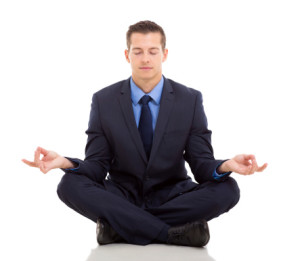Ever wondered when the “9 to 5″ job turned into an “8 to 5″ one? We as Americans love to work hard, multi-task and run until our energy tank is 100 percent empty. Today’s modern workforce isn’t limited to cubicle walls either. Taking phone calls during “off” hours is commonplace, working overtime is expected and having a day off really means just being able to do as little work as possible while at home. But we are like energizer bunnies that just keep going, and going, and going. And this is very much the case in the real estate industry.
Open houses, late evening showings and events are a part of the gig, but when is there time to relax? Many of us are foreign to the term, perhaps confusing it with laziness. And this is one of the core reasons why yoga has skyrocketed in popularity in the Western World. The practice of yoga dates back roughly 5,000 years ago, although the root beginning of the practice is still unknown. Many practicing yogis believe that it is intended to achieve calmness and balance in the body and mind through movements, stillness and concentration on breath work.
While it’s intention is still very much the same for many practicing yogis, the modern world we live in has shifted the need for yoga into one that is centered in balancing the self of everyday stressors and common workplace ailments. Yoga in general has countless benefits, including improving posture and balance, stretching and strengthening muscles throughout the entire body, and reducing anxiety. And practicing yoga in the workplace can improve morale, boost productivity, reduce absenteeism and more.
How to Integrate Yoga in the Workplace
No, you don’t have to be able to do a headstand to do yoga. Yoga poses are easily modified to meet anyone’s needs, whether muscles are extremely flexible or tight. Although space constraints can be an issue for many offices, simple postures can be done just about anywhere.
The laundry list of yoga postures is virtually endless, but three of the key body parts to focus on in an office setting are hamstrings, hips and shoulders. Sitting at a desk for extended periods of time shortens the hamstrings and creates tension in the hips, leading to the ever-popular lower back pain. At the same time, being hunched over a computer leaves the shoulders tense and tight, and the neck strained.
Meditation, although it sounds silly, can also be incredibly beneficial in the workplace. How often do you sit completely still in a comfortable position with the eyes closed? Probably not often. Encourage employees to practice meditation for five to 10 minutes each day to clear the mind of to-do lists, projects, arguments, issues, everyday noises, etc. It takes time to let the mind go, but the benefits of this practice are incredible.
The most commonly ignored rule of thumb in a yoga practice is that there are no set rules. It’s important to listen to the body and avoid anything that causes pain. Yoga is intended to feel good at all times.
From: Tribus

